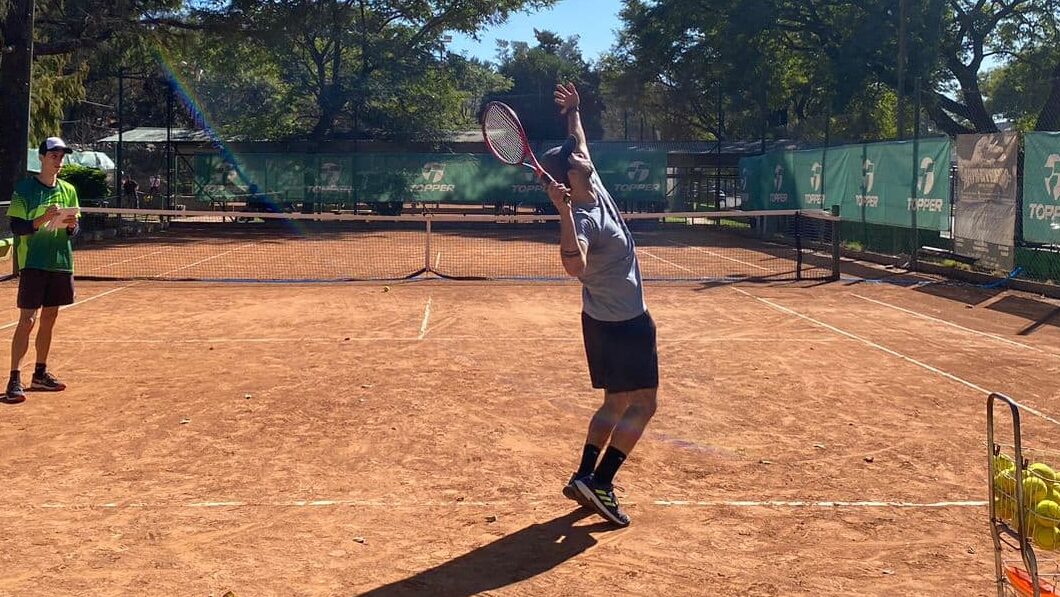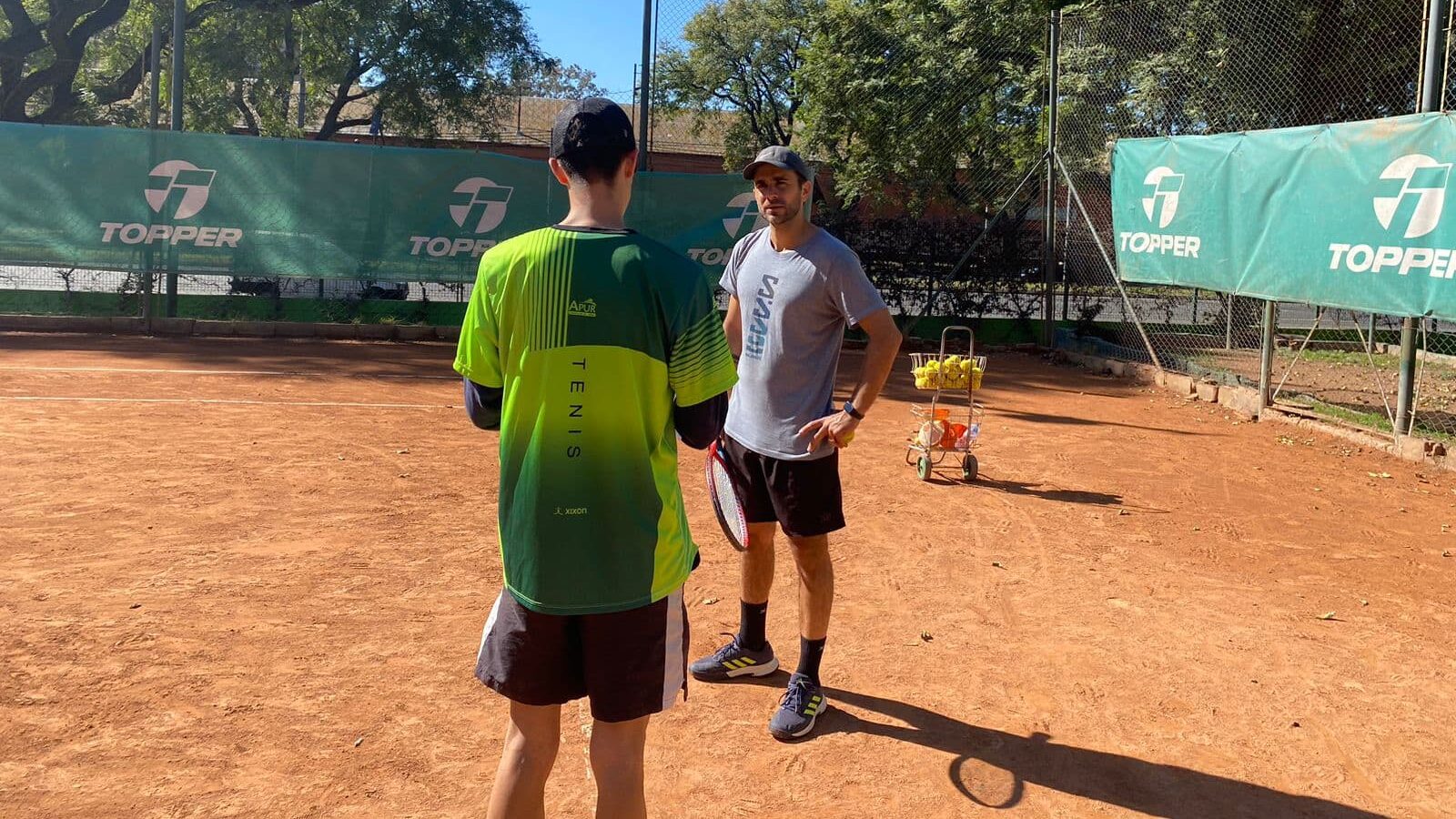All tennis players, regardless of their level, are always looking to improve and understand their performance on the court. That’s why I want to talk about a revolutionary tool that is revolutionizing the world of tennis: statistical video analysis.
Have you ever wondered how many times you serve in a match or how many successful forehand strokes you make? This analytics system gives you detailed and personalized information about your performance in each match. Imagine having precise statistics that can help you identify your strengths and areas for improvement more specifically. My name is Santiago Galla and I specialize in tennis training for adults at all levels. It’s never too late to continue competing and improve yourself. That’s why I work with students individually, using tools like statistical video analysis, to help them improve on the court. Regardless of your tennis age, level or goals, there is always room for improvement.
It all started when I saw my students play and felt the need to analyze them more deeply. Last summer, I started manually recording all the statistics generated during the game with a pencil and paper. I then transferred this information into PowerPoint with pre-made charts to help me visualize the data I was getting. Thanks to recent investments, I started using an app to record game statistics live. With the help of artificial intelligence, I can analyze the data more efficiently. Nevertheless, I still carefully review each video to look for possible errors and data that the app might not be able to capture. I currently work individually or in pairs. My students can send me recordings, or I can record them myself and then perform statistical analysis to show their strengths and weaknesses.

You might be wondering what kind of data you can analyze other than what you see at the end of the game. Some of the data points I measured from the recording are:
- Stroke ratio (forehand, backhand, topspin, flat, slice)
- Percentage of strokes that land on or off the court
- Map showing the court area where the ball is hit and the designated area of the court
- Average and top speed of my strokes
- And many more statistics…
It takes time and skill, and careful attention to measure every statistic that can be obtained from a tennis match. In addition, my motivation is to see senior players committed to continuing to improve regardless of their level or age. I value this very much in the people I work with.

Of course, there are also disadvantages such as the time it takes. You have to be on the court for the entire game, then leave the court to analyze and create charts to report to the players. The cost of materials such as tripods, mobile phones, cameras, apps, memory cards, etc. is another factor.
In this project, I focus on providing a new and innovative perspective that is increasingly being introduced to the sport. My goal is to help many players feel the emotions they once dreamed of. It takes time, experience and total dedication. It is important to be able to carefully analyze all possible statistics during a tennis match. What motivates me the most is seeing adult players, regardless of their level or age, focus on improving. That is something I truly value in the people I work with. Despite the challenges, I focus on the opportunity to provide a new and innovative perspective that is gaining ground in the sport. My goal is to help players reach their full potential and feel fulfilled in the sport they love.
Let me explain in detail how I use the video to perform statistical analysis.
- I record my players’ training sessions and upload them to the app to get the data I need.
- Once you have provided all the data in the app, we can start working on the report.
- I use a tool that creates simple charts to visualize player performance.
- After analyzing your chart, identify your strengths and weaknesses and work on individual improvement.
- Finally I prepared PDF report and explanatory video player.
- We review and discuss results together to improve our performance on the court.
One student wanted to know the speed of a tennis serve and the area in the service box that has the greatest impact. To answer these questions, we analyzed the video and charts in detail to see how he performed on the court. Here are the specific steps we took to analyze his serve:
- The first step was to analyze the video without considering the data shown in the app. This allowed us to observe the location of the service at a glance.
- Then I reviewed a chart showing where the ball landed, at what speed, what type of serve it was, and in which part of the service box it had the most bounce.
- After this was done, the student told me his goals, whether to serve flatter, more open, or more powerful. I could then compare these desired goals to the serves he executed.
- After analyzing and discussing these comparisons, I reviewed the athlete’s technique and body biomechanics.
- Based on this information, I was able to help him correct his posture, impact technique, and other key elements to achieve the serve he wanted.
- Finally, the most intense work begins: improving the sub to achieve the goal.
- Today we continue with the service work. I am recording the gameplay where the player is trying to implement the changes we have made. We are in the most difficult stage of the modification process, where fear, frustration, and negative behaviors can arise, potentially affecting the student’s progress. This is a delicate but essential step for significant improvement. Temporary difficulties may occur, but patience and persistence are required to overcome them. The student will learn to overcome these obstacles and become more confident and skilled in the service. We can guide him to continuous progress with a positive approach and constant support.
The analysis revealed valuable data that allowed us to better understand the student’s game. We were able to pinpoint the average speed of his serve and the areas of the service box that he frequently affects. This information allowed him to clearly identify his strengths and areas for improvement, which will undoubtedly help me refine his technique and become more effective as a coach. This teamwork allowed the student to satisfy his curiosity and obtain specific data that helped him optimize his performance on the court. He now has valuable information to focus his training and reach new levels of excellence. The collaboration between the student and the analytics team was crucial in identifying opportunities for improvement and outlining effective action plans. This synergy brings us closer to our goal of taking the player’s performance to new levels.

As you can see, this is a very specific and personalized task that I try to clear all doubts. Sometimes the players are surprised by the data I provide, but most of the time it helps them see things they had not considered before. As I mentioned before, this project is constantly growing for me. I aim to continue to improve and add tools such as biomechanical analysis and body measurements, which can make a big difference in performance on the court.
You don’t have to be an expert or an adult to use this tool. It can be applied at any level of competition or at any stage of a player’s career. I primarily work with adults, but I can also work with young players who want to continue competing, professionals, and even veterans. Today, this is an innovative and evolving field within tennis learning. Thanks to the development of increasingly complex and comprehensive technologies, this field is perfectly integrated with strategic sports like tennis, where every mistake and success can determine the outcome of a match.
This way of working fascinates and intrigues me. It completely immerses me in the player’s experience, as if I were part of their team. I would like to analyze professional players in the future, delve deeper into their tennis, and help them work on the court. It would be fantastic to be a critical contributor to their tennis success. I hope that day comes soon, because I am excited about the possibility of being a key part of the development and growth of elite players.






